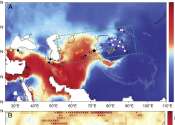The Great Observatory for Long Wavelengths (GO-LoW) proposal
Humankind has never before seen the low frequency radio sky. It is hidden from ground-based telescopes by the Earth's ionosphere and challenging to access from space with traditional missions because the long wavelengths ...









